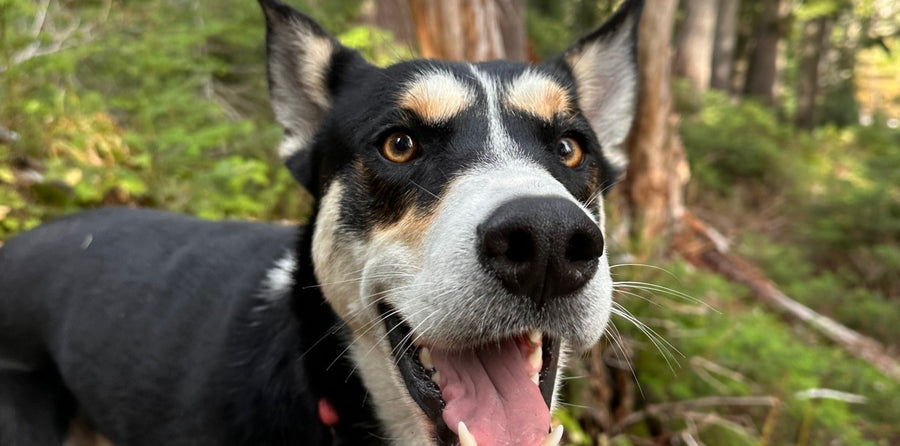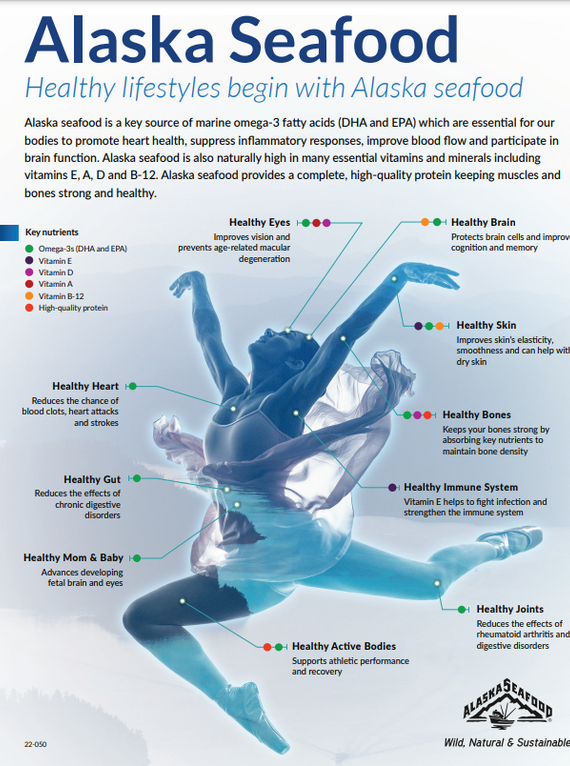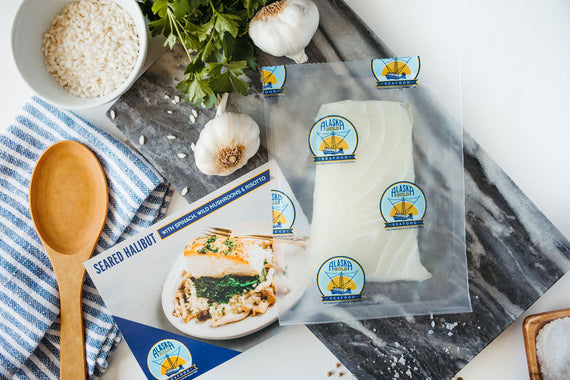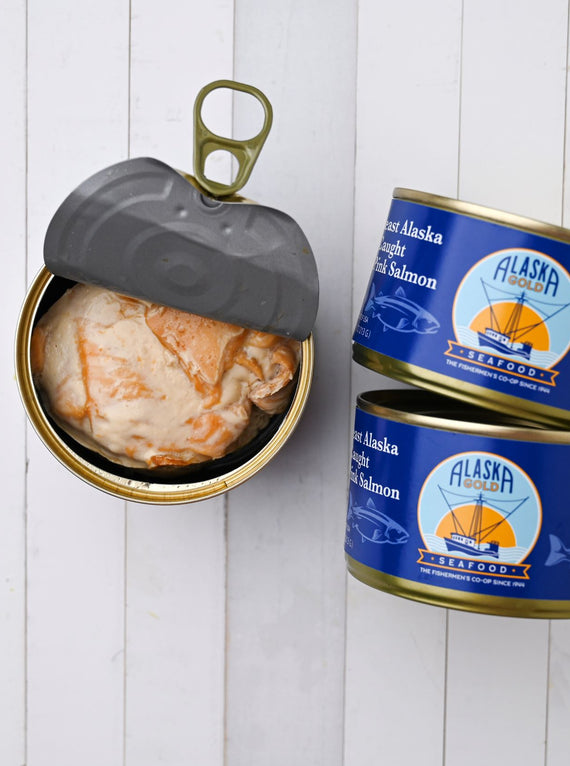
Can my dog eat salmon? This is a question we occasionally get. And the short, sweet answer is yes, your dog can eat salmon as a topper on their regular food. Just make sure it is fully cooked (to internal temperature of 145 degrees Fahrenheit). Salmon’s rich nutritional profile and appetizing flavor make it an appealing option for pet owners seeking to diversify their furry companions' meals.
Salmon is a lean protein with heart and brain-healthy omega-3s, which is why it is a nutritional powerhouse for human beings. And for these same reasons, salmon is a source of good nutrition for dogs and cats as well.
Our fish monger Kendall has been feeding his dogs Alaska Gold salmon for years and has this to note:
“Yes, absolutely I feed my dogs Alaska Gold wild salmon. My dogs get so many compliments on how sleek and shiny their coats are. And I attribute their healthy skin and fur to the salmon they eat.”
It must be noted that Alaska Gold Seafood delivers seafood for people. We are not a pet food company. And none of our products are sold as such. But we’ve had customers ask about feeding leftovers or the salmon skin to their dogs.
Our fish monger Kendall has a 60-pound Siberian Husky/Shepherd mix Panda and a 60-pound Korean Jindo mix JinHo. And here’s more of what Kendall has to say on feeding dogs salmon: “One thing I noted was that sometimes I don’t like eating the skin on my salmon. I started giving the cooked salmon skin to my dogs as a topper. And they loved it. And yes, it seemed to make their coats shine. I wanted to give my dogs the best. They’re our fur babies. I wanted more for my dogs than kibble but I don’t have time to prepare my dogs special food all the time. And some of the delivered fancy natural dog food is really expensive. One thing I started doing was cooking an additional keta salmon portion or two for my dogs when I was cooking salmon for my wife and I. For a special treat, I serve them about 2-3 ounces of keta salmon on top of their kibble. I would cook up a couple portions at a time in my oven with the salmon my wife and I were eating and save those up to use over a couple of days as super high reward training treats and meal toppers.”
Keta salmon is a great choice for giving to pets because it’s not as fatty as king salmon, for example. Dogs definitely need leaner fish like keta salmon. In fact, one of the nicknames for keta salmon is “dog salmon” because it’s what Alaska Natives have given their sled dogs for nutrition since time immemorial. “So, it’s a perfect choice for my husky Panda. Her instincts are to be a sled dog, and yes she pulls me around on our runs together and sometimes we skijor together, so she gets to live out her sled dog dreams by skijoring and eating some keta salmon.”
Another nice thing about keta salmon, compared to the king salmon and coho salmon we sell, is keta salmon is more economical. When you get the 20-pound box on subscribe and save, it works out to be $12.46/pound. A pound of keta salmon portions gives my dogs about 5-6 meal toppers. “I’ve found that the fancy dog food delivered is about $7 per serving for the 60-pound dogs. So, having bonus high-reward, ultra-nutritious salmon servings at about $2-3 a pop are easier for the wallet to digest. I still feed my dogs some conventional kibble to round out all of their vitamin and nutrition needs, but the salmon is such a powerhouse treat that they love so much.”
Nutritional Advantages of Eating Salmon
In moderation, salmon can be a nutritious addition to a dog's diet, offering a range of health benefits. For example:
- Omega-3 Fatty Acids--Salmon is an excellent source of omega-3 fatty acids, particularly EPA (eicosapentaenoic acid) and DHA (docosahexaenoic acid). These essential fatty acids play a vital role in maintaining heart health, reducing inflammation, and supporting cognitive function. According to the American Kennel Club, Omega-3s can be used as an anti-inflammatory supplement beneficial for dogs’ skin and coat and can also help treat arthritis and chronic kidney disease.
- Protein: Salmon is a complete protein, providing all the essential amino acids required for a dog's health and development. Protein is crucial for muscle growth, tissue repair, and enzyme production.
- Vitamins and Minerals: Salmon is a rich source of vitamins and minerals, including vitamin D, vitamin B12, potassium, and selenium. These nutrients contribute to overall health, supporting bone health, immune function, and energy levels.
Feeding Salmon Guidelines
If you plan on offering salmon to your pets, here are some important feeding guidelines:
- Super important! Always cook your salmon to at least 145 degrees internal temperature—dogs cannot eat raw salmon because of a rare parasite that dogs are susceptible to that causes Salmon Poisoning Disease.
- Cook with no seasonings and no oil if possible or minimal oil (olive oil ideally)
- Feed no more than 100 grams (3.5 ounces) per 10 pounds of your dog’s body weight, but better yet use as a topper (1 or 2 ounces)
- We recommend keta salmon for the lean protein and economic use of salmon. If you’d like to feed the skins of other salmon, we recommend starting with really small portions (i.e., less than an ounce)
- Avoid drastic changes to your dog’s diet. Start with small servings. Again, less than an ounce when first trying out a new food for your dog.
- Consult with a Veterinarian: Before introducing salmon to your dog's diet, consult your veterinarian to discuss the appropriateness and quantity based on your dog's individual needs and health status.



